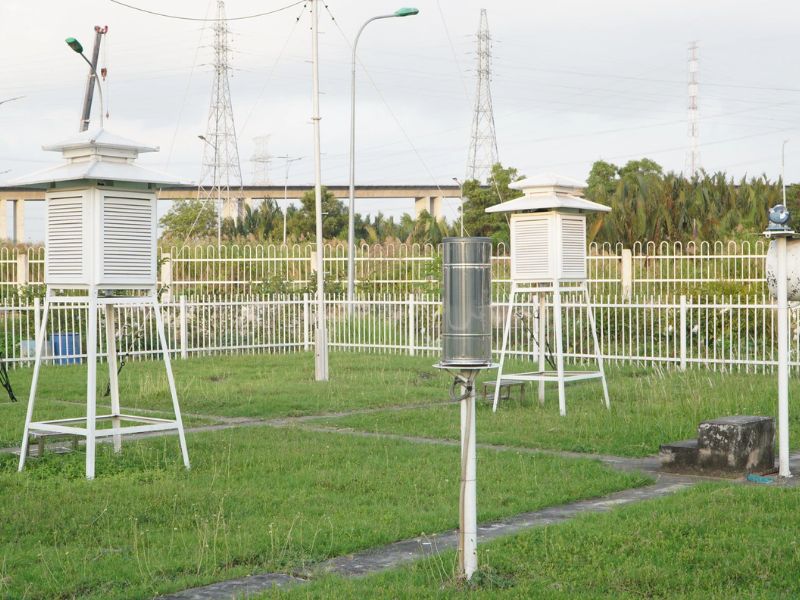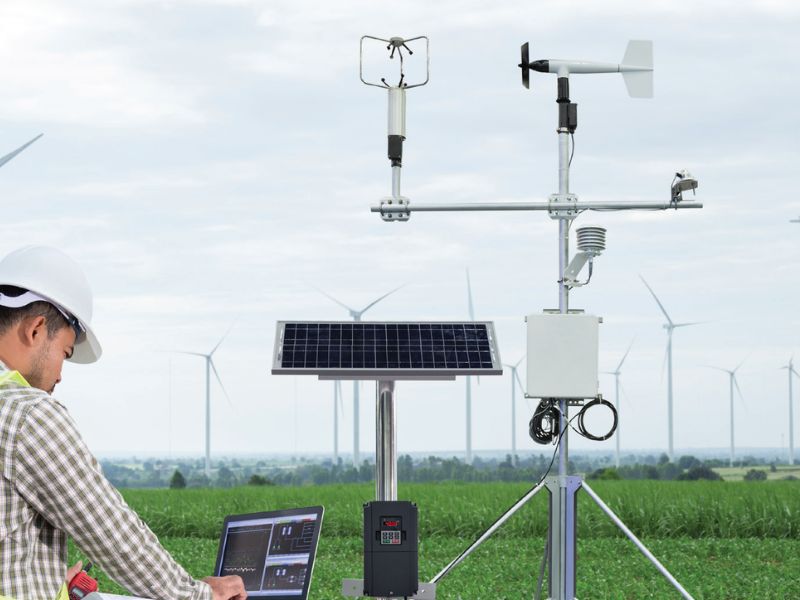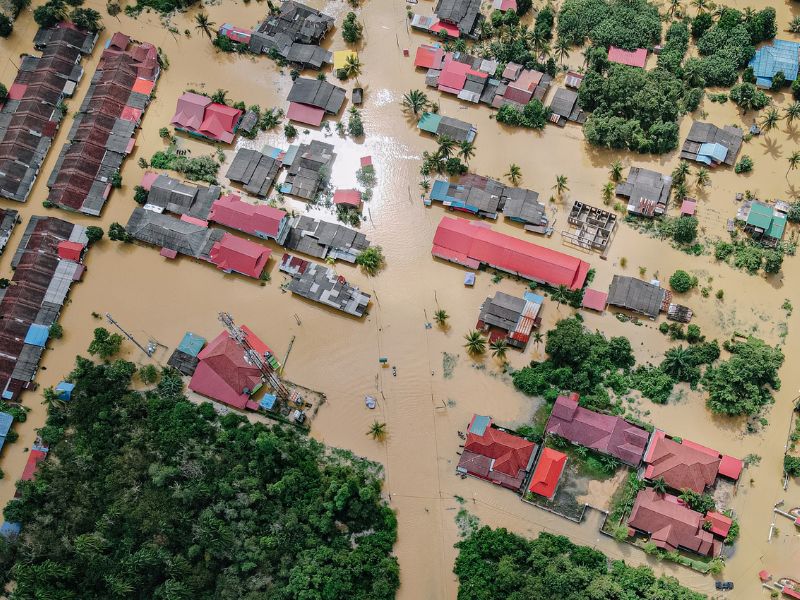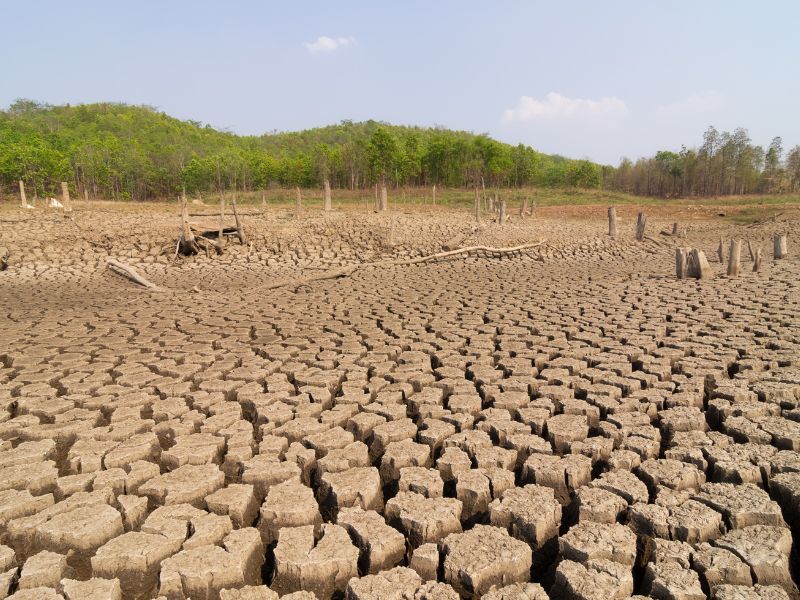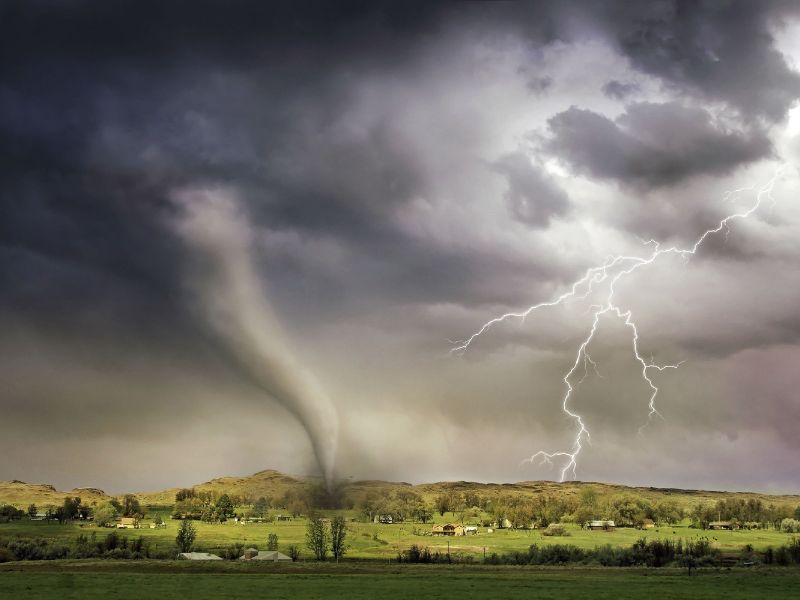Every day, the weather updates and disaster warnings we receive are provided by the Meteorological and Hydrological Forecasting Center. So, what is hydrometeorology, and how does meteorological and hydrological information play a role in our lives? To gain a better understanding of this concept and its importance, let’s explore the detailed article provided by Reecotech below.
Understanding Hydrometeorology
What is hydrometeorology? Hydrometeorology is a scientific field that combines two main disciplines: meteorology and hydrology. To better understand hydrometeorology, let’s first delve into each of these concepts.
What is Meteorology?
Meteorology, or atmospheric science, is a branch of science that studies the processes and phenomena occurring in the atmosphere. The primary goal of meteorology is to forecast atmospheric processes, weather phenomena, and climate over different time periods. Meteorological studies encompass areas such as the physics, chemistry, and dynamics of the atmosphere, as well as the direct effects of the atmosphere on the Earth’s surface and oceans. Key meteorological factors such as temperature, air pressure, humidity, wind, clouds, and precipitation continuously fluctuate over time and space, and can be monitored, analyzed, and explained using scientific methods.
Meteorology includes various specialized fields such as agricultural meteorology, hydrometeorology, operational meteorology, upper-air meteorology, marine meteorology, astrometeorology, aviation meteorology, dynamic meteorology, synoptic meteorology, and applied meteorology.
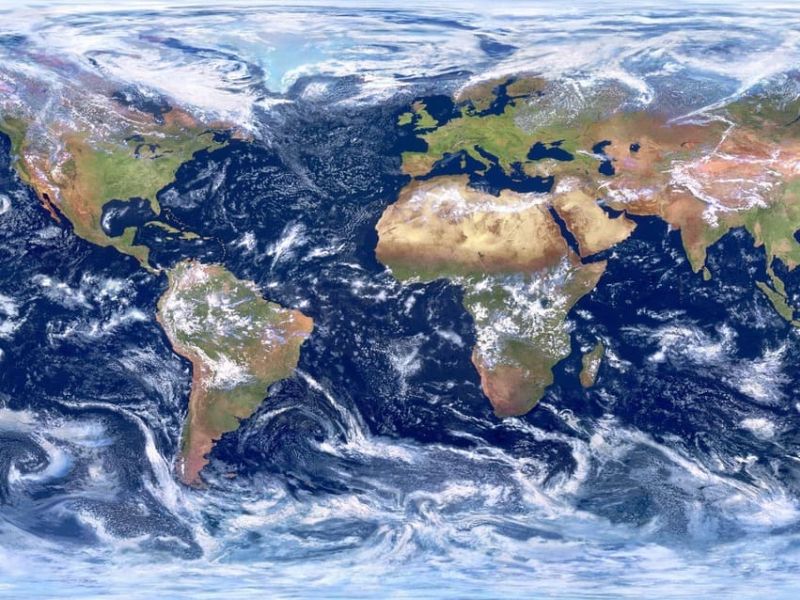
What is Hydrology?
Hydrology, or hydrological science, is the study of the properties, movement, and distribution of water (both liquid and solid) across the Earth. Research in this field covers the hydrological cycle and water resources, focusing on the physical and chemical interactions between water and other parts of the Earth, as well as the impact of water on life on the planet. Hydrologists work on forecasting floods, droughts, riverbank erosion, saltwater intrusion, groundwater, and other related phenomena.
The field of hydrology includes specializations such as hydrometeorology, surface hydrology, and geological hydrology, but does not encompass meteorology and oceanography.
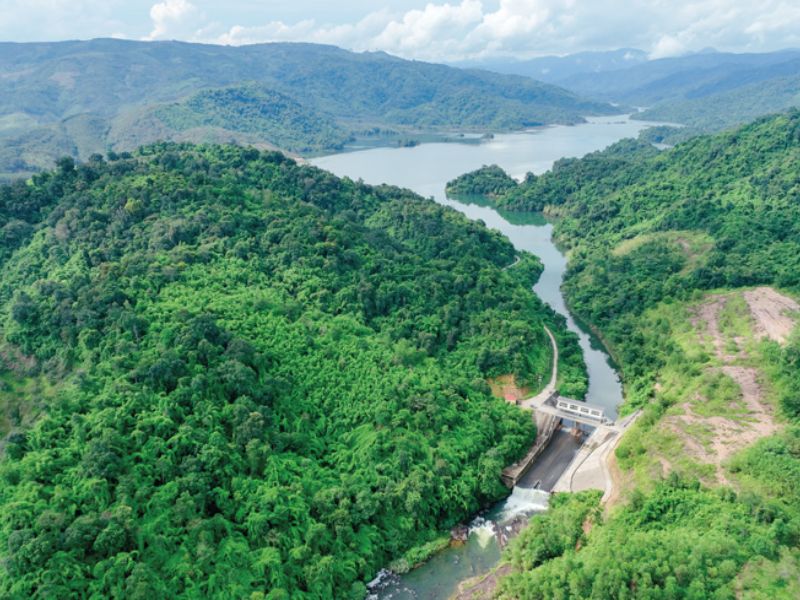
What is Hydrometeorology?
Due to the overlap between meteorology and hydrology, the field of Hydrometeorology has emerged. This interdisciplinary science focuses on studying and analyzing the relationships between the different phases of water in the atmosphere and on the Earth’s surface within the hydrological cycle. The goal is to understand weather and climate states through models and reasoning, thereby providing forecasts for natural disasters such as floods, droughts, and cyclones. Hydrometeorology provides crucial information that helps protect property, human life, and ecosystems on Earth.
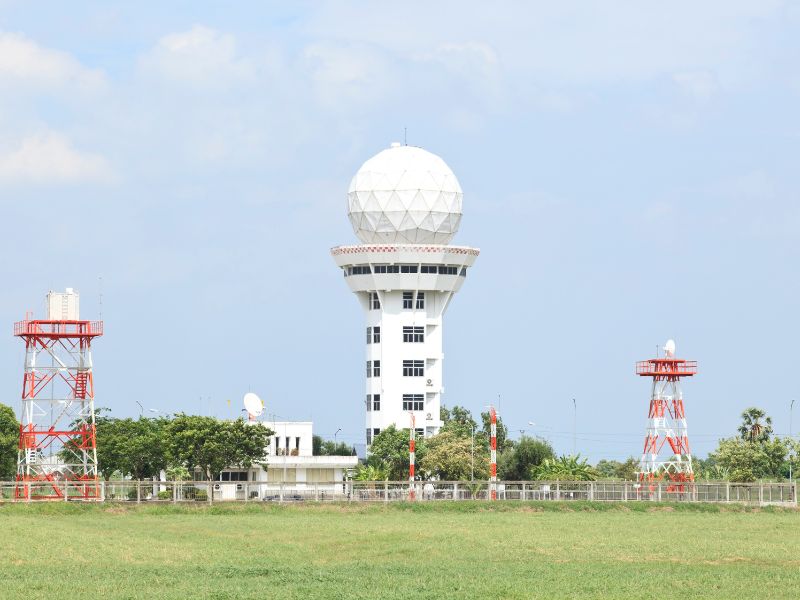
The Role of Hydrometeorological Information in Daily Life
Hydrometeorology is a crucial field that every country needs to develop and invest in. According to the World Meteorological Organization (WMO), hydrometeorological information can provide benefits that are 10-20 times greater than the costs involved.
Hydrometeorological Monitoring
Hydrometeorological monitoring involves the direct or indirect observation and measurement of atmospheric conditions, as well as the water in rivers, streams, canals, lakes, and seas. The data and information from hydrometeorological monitoring provide the foundation for forecasting systems, warnings, and national hydrometeorological databases.
In recent years, Vietnam has been one of the countries most severely affected by climate change, with increasing frequency and intensity of hydrometeorological phenomena.
In this context, strengthening management institutions and enhancing technical and technological capabilities in the field of hydrometeorology are crucial. This will improve operational efficiency, meet the needs for economic and social development, and address disaster prevention and climate change adaptation.
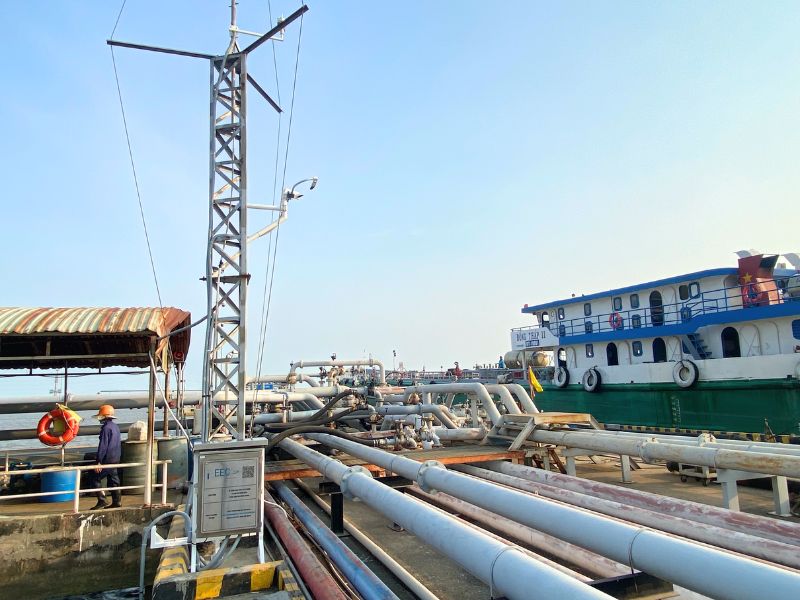
Hydrometeorological Forecasting and Warnings
Hydrometeorological forecasting provides information and data about the state and evolution of hydrometeorological phenomena in the future for a specific area or location, over a defined period. Hydrometeorological warnings provide information about the risk of dangerous or unusual weather events that could affect or damage people, property, and the environment.
This forecasting and warning information is provided by specialized organizations and individuals, in various formats such as text, data tables, maps, charts, symbols, images, and sounds. To ensure effectiveness, hydrometeorological forecasts and warnings need to be delivered in a timely and accurate manner. They are crucial tools that help areas at risk of natural disasters or hydrometeorological hazards to respond effectively, and support disaster response and emergency management efforts nationwide.
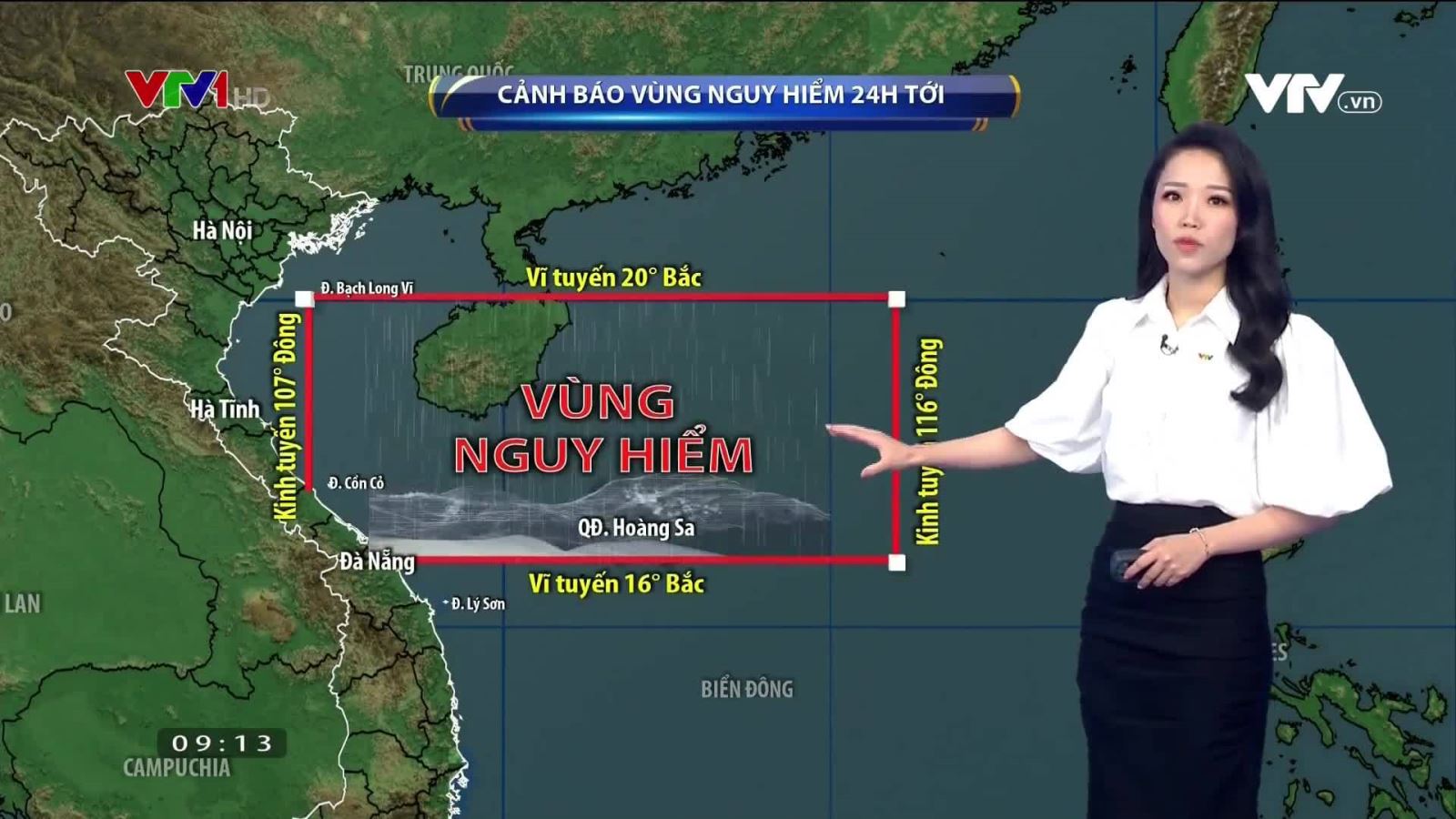
Hydrometeorological Data Collection and Transmission System
The hydrometeorological data collection and transmission system plays a crucial role in sustainable economic and social development. The field of hydrometeorology has increasingly integrated information technology to create a diverse range of forecasting and warning products, while also developing impact forecasting systems to meet the needs of various sectors.
The hydrometeorological data collection and transmission system continuously gathers comprehensive and accurate data and communicates information in a timely manner under all conditions. The system operates continuously, with high speed and wide coverage, ensuring the timely provision of meteorological and hydrological information and data to effectively support various economic and social sectors of the country.
Specifically:
-
- For agriculture: Meteorological forecasting provides not only average temperature and precipitation information but also detailed data on sunshine hours, humidity, and rainfall during different seasonal periods. The system is also capable of forecasting and warning about pests and diseases, as well as predicting crop yields based on weather conditions.
- For hydropower: The hydrometeorological sector produces forecasts to support reservoir operation procedures according to the Prime Minister’s Decision. This helps forecast water inflow to reservoirs, contributing to the management of electricity production.
- For renewable energy: Hydrometeorology has applied meteorological models to simulate detailed wind and wave fields in the East Sea, with a resolution of approximately 10 km. These products assess the distribution of wind and wave energy density, aiding the offshore wind and wave energy sectors.
Hydrometeorological Disasters
According to the World Meteorological Organization (WMO), about 70% of natural disasters originate from hydrometeorological phenomena.
Hydrometeorological Disaster: Flooding
Flooding occurs when heavy rain persists for many days or hours, causing water levels to rise rapidly and overwhelm drainage systems. In Vietnam, flooding is one of the most common and damaging hydrological disasters. In addition to heavy rainfall, flooding can also result from overflow from large water bodies such as rivers, lakes, and streams.
Common Types of Flooding Include:
-
- Flash Floods: These primarily form due to heavy rainfall combined with storms or tornadoes, or as a result of dam failures or river blockages. Flash floods are characterized by rapidly flowing water with high intensity, causing severe damage to people and property.
- River Floods: These occur due to the gradual accumulation of water over several days or weeks, usually resulting from heavy rain or snowmelt.
- Coastal Floods: Rainfall combined with storms or hurricanes can cause water levels to rise along the coast and inundate coastal areas.
- Urban Floods: These occur when human activities destroy natural habitats by converting agricultural land or forests into urban infrastructure such as roads and parking lots. These areas can reduce water absorption by 2 to 6 times compared to natural terrain, leading to urban flooding. Streets may turn into fast-flowing rivers, and basements can become dangerous traps.
Hydrometeorological Disaster: Drought
Drought is a hazardous phenomenon characterized by common features such as aridity, water shortages, prolonged heat, and cracked soil. It begins when seasonal rainfall falls below 25% of the long-term average for the region. Drought can last from a single dry season to several years and affect large geographic areas. Common types of drought include:
-
- Hydrological Drought: Occurs when there is a shortage of water supply both on the surface and underground, leading to an inability to meet the usual water needs of the population.
- Agricultural Drought: Happens when soil moisture and rainfall are insufficient during the growing season, resulting in wilting and reduced vitality of crops.
Hydrometeorological Disaster: Cyclones and Tropical Cyclones
Cyclones and tropical cyclones are hydrometeorological disasters that can occur alongside storms. These phenomena are characterized by a large low-pressure center that generates strong winds and heavy rainfall due to the combination of various storms.
Tropical cyclones typically form over warm water and weaken as they move onto land. Consequently, coastal areas often suffer significant damage from tropical cyclones. However, cyclones can also bring heavy rainfall, leading to substantial flooding inland, and storm surges can cause coastal flooding up to 40 kilometers from the shore. On the other hand, tropical cyclones have a positive impact by reducing drought conditions, as they transfer heat and energy from tropical regions to temperate latitudes. This makes them a crucial component of the global atmospheric circulation mechanism.
I hope this article has helped you better understand meteorology and hydrology, as well as the related concepts. Additionally, I hope you have recognized the importance of meteorological and hydrological information in our lives. I wish you continued success in your learning!

